This book is not intended as a substitute for medical advice of physicians. The reader should regularly consult a physician in all matters relating to his or her own health or the health of a child, and particularly in respect of any symptoms that may require diagnosis or medical attention.
Copyright 2012 by Margaret M. Meade
All rights reserved. In accordance with the U.S. Copyright Act of 1976, the scanning, uploading, and electronic sharing of any part of this book without the permission of the publisher is unlawful piracy and theft of the authors intellectual property. If you would like to use material from the book (other than for review purposes), prior written permission must be obtained by contacting the publisher at permissions@hbgusa.com. Thank you for your support of the authors rights.
Grand Central Life & Style
Hachette Book Group
237 Park Avenue, New York, NY 10017
www.hachettebookgroup.com
www.twitter.com/grandcentralpub
First e-book edition: February 2012
Grand Central Life & Style is an imprint of Grand Central Publishing.
The Grand Central Life & Style name and logo are trademarks of Hachette Book Group, Inc.
The publisher is not responsible for websites (or their content) that are not owned by the publisher.
ISBN 978-1-455-50058-1
This book is dedicated to Nick and John and Jake, my three sons and taste testers, who continue to teach and inspire me daily with their love and presence; to John, husband and partner who humors and loves me through thick and thin, messy kitchens and purees, finger foods, and table foods, too. And to all parents who dare to step into the kitchen and make their babies food, giving their babies the gift of fresh flavors and real tastes, I applaud and dedicate this to you.
With unending gratitude, I would like to first thank all the Wholesome Baby Food website visitors who over the past eight years have shared with me their praise, criticism, encouragement, and enthusiasm, which continue to inspire and humble me: this book is for all of you. Thank you to Gramma Jay Jay and Poppy Dextraze, whose love and support have saved me and carried me through good times and bad; to Diana Baroni, my editor at Grand Central, who believed that this book could indeed transcend the website and who hung in there during times of turbulence; to Naomi Rosenberg and Andrew Rosen, two of the finest pediatricians I have been fortunate to know and have as physicians. They approach their patients with open hearts, open minds, and open ears, knowing that good health is not just about medicine. Thank you to Kris Howe, Melina Gosselin, Nancy OLeary, and Jenn Driscoll, who long ago at a play date thought I should create a website, and to Tracy Lawman, who may have grown tired of hearing about my writing but continued to support me and meet me for Friday coffee.
Since you have picked up this book, you likely have a baby who is about to begin eating solid foods or you know someone who does. The Wholesome Baby Food Guide is perfect for anyone who wants to know more about how to introduce solid foods, the various stages of solid foods, and infant nutrition. Within these pages you will find no-nonsense, straightforward information and recipes. I know that parents today dont have a lot of time to waste slogging through medical jargon or creating fancy recipes with ingredients that are hard to find at the local grocery store. You see, I am not a trained chef or a pediatrician, but I do have a passion for empowering parents to trust their instincts and their cooking abilities. When I set out to write this book, my goal was to help my readers gain confidence in themselves, to realize that its not necessary to be medically trained or have a certificate from a culinary institution to be able to provide the best nutrition possible for their little ones.
In 2003, I began writing and publishing the Wholesome Baby Food website, which over the years has become a trusted resource for parents to learn about solid foods and feeding babies. This book combines the best of the website, with lots of familiar ideas and recipes, along with new content and recipes found only within these pages. It has been a wonderful experience writing this book so that parents everywhere will be able to learn about baby food stages and whip up fresh and easy homemade baby food, beginning healthy eating habits right from the start. I am also delighted to be able to fulfill the requests of many of the websites visitors and offer up a real book they can hold in their hands and take into the kitchen. Now go forth and puree!

O f all the milestones a baby will reach in the first year, beginning solid foods is one of the most nerve-racking and confusing (not to mention messy). As a parent, you will likely be bombarded with friendly but maddeningly conflicting advice offered by well-intentioned friends and family. I can still recall all the confusing advice I received about feeding my own babies. (With my twins, a few people even suggested that I let one twin be the taste tester to determine what foods I should eventually feed them both. Looking back, I wonder if this might be the reason John always lets his brother try new foods first. Did the boys overhear this advice when they were still in their infant carriers and decide between the two of them who should go first?) Once you get past the myths and the folklore, starting your baby on solid foods does not have to be scary. Armed with the right information and a good sense of humor, you will find that introducing solids can be a fun adventure for you both.
 As you contemplate starting your baby on solid foods, its important to note what various medical organizations recommend. The American Academy of Pediatrics (AAP), along with many other health agencies such as the World Health Organization and UNICEF, states that breast milk and/or formula should provide all the nutrition your baby needs during the first six months of life. However, the AAP Committee on Nutrition also notes that introducing solid foods between four and six months is perfectly acceptable; introducing babies to solids prior to four months is not recommended. Regardless of whether you start at four, five, or six months, or even later, keep in mind that solid foods will not make up a large portion of your babys nutrition for quite a few weeks after you start. Remember that you are introducing your baby to solid foods, not suddenly changing your babys diet. At this point, the term complementary foods is often used instead of solid foods, and this term best describes the early role of solids. In the beginning, you are complementing breast milk and/or formula with solid foods, not replacing them. The first few weeks should be a time to take it slow, keep it simple, and stay relaxed. Explore and enjoy the experience of watching your baby touch and taste his or her way through the wonderful world of food!
As you contemplate starting your baby on solid foods, its important to note what various medical organizations recommend. The American Academy of Pediatrics (AAP), along with many other health agencies such as the World Health Organization and UNICEF, states that breast milk and/or formula should provide all the nutrition your baby needs during the first six months of life. However, the AAP Committee on Nutrition also notes that introducing solid foods between four and six months is perfectly acceptable; introducing babies to solids prior to four months is not recommended. Regardless of whether you start at four, five, or six months, or even later, keep in mind that solid foods will not make up a large portion of your babys nutrition for quite a few weeks after you start. Remember that you are introducing your baby to solid foods, not suddenly changing your babys diet. At this point, the term complementary foods is often used instead of solid foods, and this term best describes the early role of solids. In the beginning, you are complementing breast milk and/or formula with solid foods, not replacing them. The first few weeks should be a time to take it slow, keep it simple, and stay relaxed. Explore and enjoy the experience of watching your baby touch and taste his or her way through the wonderful world of food!
How will I know when my baby is ready to eat solid foods?
When a baby hits three or four months of age, many parents start to feel that he or she may need something more than formula or breast milk. Your baby may suddenly be waking up more often at night or eating more often than has been typical. But its important to remember that while waking at night for a feeding



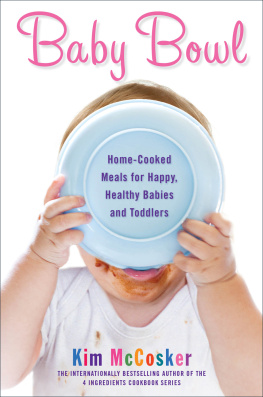
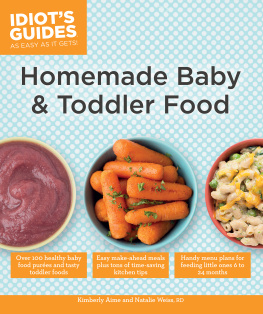


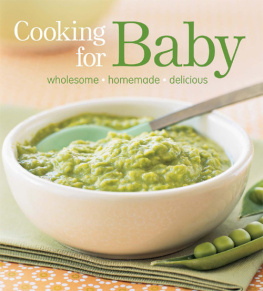
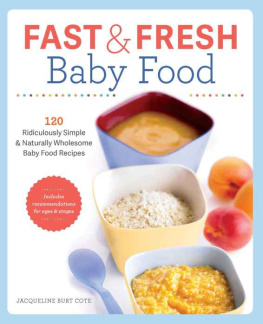
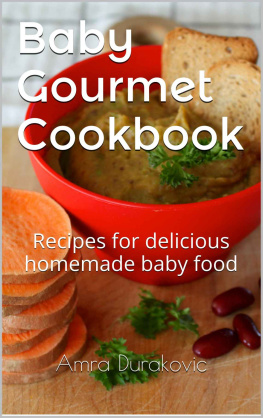
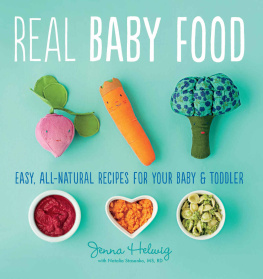

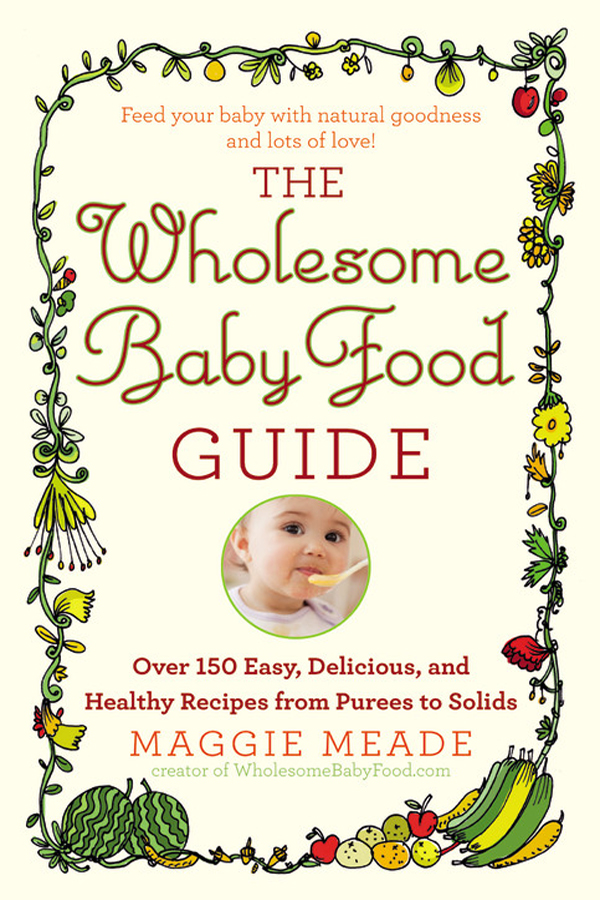

 As you contemplate starting your baby on solid foods, its important to note what various medical organizations recommend. The American Academy of Pediatrics (AAP), along with many other health agencies such as the World Health Organization and UNICEF, states that breast milk and/or formula should provide all the nutrition your baby needs during the first six months of life. However, the AAP Committee on Nutrition also notes that introducing solid foods between four and six months is perfectly acceptable; introducing babies to solids prior to four months is not recommended. Regardless of whether you start at four, five, or six months, or even later, keep in mind that solid foods will not make up a large portion of your babys nutrition for quite a few weeks after you start. Remember that you are introducing your baby to solid foods, not suddenly changing your babys diet. At this point, the term complementary foods is often used instead of solid foods, and this term best describes the early role of solids. In the beginning, you are complementing breast milk and/or formula with solid foods, not replacing them. The first few weeks should be a time to take it slow, keep it simple, and stay relaxed. Explore and enjoy the experience of watching your baby touch and taste his or her way through the wonderful world of food!
As you contemplate starting your baby on solid foods, its important to note what various medical organizations recommend. The American Academy of Pediatrics (AAP), along with many other health agencies such as the World Health Organization and UNICEF, states that breast milk and/or formula should provide all the nutrition your baby needs during the first six months of life. However, the AAP Committee on Nutrition also notes that introducing solid foods between four and six months is perfectly acceptable; introducing babies to solids prior to four months is not recommended. Regardless of whether you start at four, five, or six months, or even later, keep in mind that solid foods will not make up a large portion of your babys nutrition for quite a few weeks after you start. Remember that you are introducing your baby to solid foods, not suddenly changing your babys diet. At this point, the term complementary foods is often used instead of solid foods, and this term best describes the early role of solids. In the beginning, you are complementing breast milk and/or formula with solid foods, not replacing them. The first few weeks should be a time to take it slow, keep it simple, and stay relaxed. Explore and enjoy the experience of watching your baby touch and taste his or her way through the wonderful world of food!